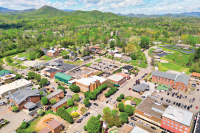Return of the meteors
 Astronomers at the Pisgah Astronomical Research Institute are reminding the public of the annual Leonid Meteor Shower in November.
Astronomers at the Pisgah Astronomical Research Institute are reminding the public of the annual Leonid Meteor Shower in November.
The Leonid Meteors are expected to light up the night sky Nov. 17-18, reaching their peak of about 20 meteors per hours at 6 p.m. Monday, Nov. 17. The pre-dawn hours Nov. 17 and 18 will be the best time to observe them, though.
The Leonids are associated with Comet Tempel-Tuttle, which revolves around the sun every 33 years. The Earth encounters the comet’s trail of dust particles around the same time every year, and the particles flare up as they enter the Earth’s upper atmosphere.
Though the Leonids have been known to flare up into spectacular showers, no such meteor storm is predicted for 2014. The moonlight will interfere somewhat with observation of fainter meteors this year.
But they’ll still be visible. Look to the northeast to see the meteors radiating out of the constellation of Leo the lion. No binoculars or telescopes are necessary.





